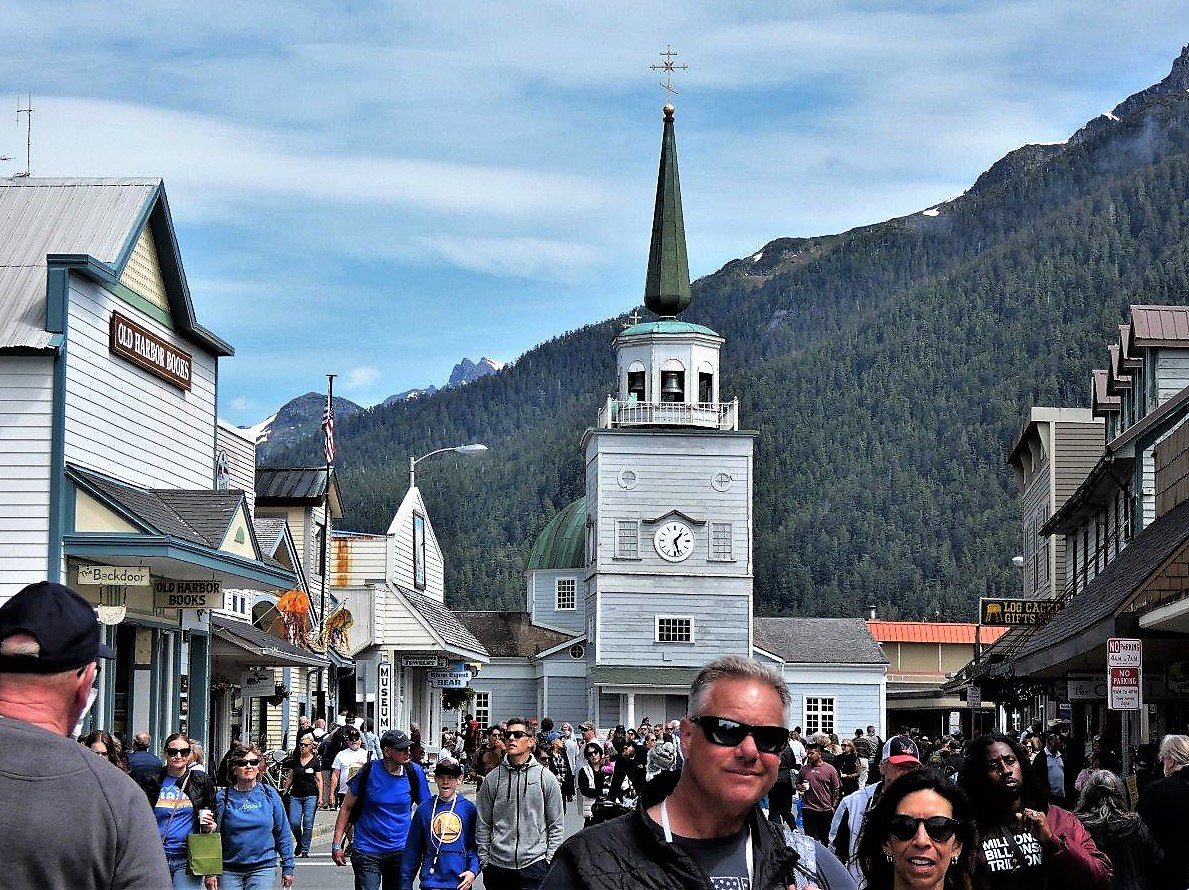
There was a strain on Sitka’s housing market prior to the pandemic, but the economic recovery – and especially the jump in summer cruise tourism – has pushed housing near the top of the list of the community’s economic concerns. All this while long-term data shows Sitka’s year-round population in steady decline. Why?
Garry White, executive director of the Sitka Economic Development Association, outlined some of the forces behind the local housing market for the Sitka Chamber of Commerce on Wednesday (11-1-23).
See Garry White’s entire presentation to the Sitka Chamber of Commerce.
White said it’s hard for the statistics to capture exactly what’s going on in Sitka. Many houses change hands without going on the market, and national survey data about the vacancy rate of rentals is notoriously unreliable.
“To be blunt, the housing data sucks here, because we’re not a big enough sample size,” White said.
White believes the extraordinary growth of cruise tourism from zero in 2020 to well over half-a-million in 2023 brought not just the housing problem into sharp focus, but many other issues as well. He thought there would be a leveling effect, as Sitka adjusted over time.
“If you take that 557,000 passengers and let’s assume they all spend $100 while they’re in town, which is about right,” he explained. “That’s just under $56 million that’s coming into our community in summer. Take 6-percent and that’s just over $3.3 million the City and Borough is getting in tax revenue to support the quality of life, and get us other amenities. But the downside is how do we as a community absorb that within our traffic patterns, our housing patterns, and everything else? The challenge is that we’re playing catch-up, right? Instead of this linear growth, we went ‘boom’ and our (infrastructure) growth didn’t keep up with it. So at some point I’m sure it’s going to even out, but I think that’s one of the reasons why we’re having a housing issue right now, and it’s been a very prevalent topic. And you know, there’s a lot of grumbling about transportation and the number of tourists and everything else. But I think it’s all going to resolve moving forward.”
During Q&A, White discussed another issue that isn’t captured by the data: Sitka is evolving into a community with two different populations: Year-round, and seasonal. Over the last three decades, Sitka’s population dropped by 8-percent, from just over 9,000 people to about 8,300. White attributed the decline to the high cost of living, and expensive housing. From the audience, Sitka Planning Director Amy Ainslie observed that in another respect, Sitka was actually growing.

“Our permanent year-round residential base is declining, but that’s clearly not the case at all times during the year,” Ainslie noted. “And so what is our peak population? And how do we then plan amenities, services, and infrastructure for those peak numbers, but in a way that we’re not then supporting that peak demand all year round? We don’t need to. So yeah, I’m curious to hear if anyone digs into the numbers more about what we’re looking at for peak population.”
Also from the audience, SEARHC vice-president Elliot Bruhl echoed Ainslie, saying that many residents who had lived in Sitka over the past decades agreed that there was significant population growth in town over the summer.






























